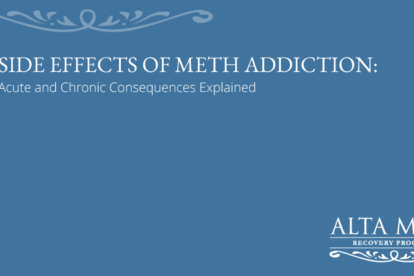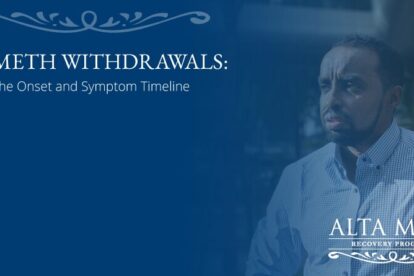
Binge Drinking
Drinking enough in one sitting to cause blood alcohol content to hit 0.08 or higher is considered binge drinking. This pattern of alcohol consumption is risky because it can put a person at risk for injuries and assaults, substance use disorders, and long-term health problems. Binge drinking can even be fatal. Most people who binge drink are not alcoholics, but they are at risk for developing an alcohol use disorder. Changing unhealthy drinking patterns is important to do before this happens. Lifestyle changes and a conscious decision to drink less can help, but some people will need professional assistance cutting back.
Binge drinking is an unhealthy behavior associated with alcohol that essentially refers to drinking enough to get drunk. While the amount of alcohol that constitutes binge drinking varies depending on individuals, the serious potential consequences of this pattern of drinking are similar for anyone. It puts a person at risk for accidents, injuries, assaults, unintended pregnancies, alcohol use disorders, and long-term, chronic health problems.
The good news for people who want to make positive changes is that it is possible to curb this kind of drinking behavior, often without giving up alcohol entirely.
Making specific lifestyle changes can help change drinking habits, but it is important to see a professional in mental health or addiction to be screened for alcohol use disorder if these efforts don’t lead to real change. With guidance from an expert, effective treatment can address each individual’s needs.
What Is Binge Drinking?
Binge drinking is a pattern of drinking that goes beyond light or moderate drinking. Moderate drinking is considered to be one drink per day for women and two per day for men. The definition of binge drinking, according to the National Institute on Alcohol Abuse and Alcoholism, is enough alcohol in a period of time to bring blood alcohol concentration (BAC) to 0.08 or above.
There are several factors that determine how much alcohol will bring a person’s BAC to that level or higher, including gender, weight, overall health, metabolism, and what he or she has eaten. In general, though, binge drinking occurs when a man has five or more drinks and a woman four or more drinks in two hours. What counts as one drink is five ounces of wine, 12 ounces of beer, 1.5 ounces of liquor, or eight to nine ounces of malt liquor.
Binge Drinking Statistics
This heavy and excessive type of alcohol consumption is not uncommon in the U.S. Although there are some very serious potential consequences of drinking this way, most people who engage in binge drinking are not alcoholics and are not dependent on alcohol.
- One out of six adults in the U.S. binge drinks an average of four times per month. They consume an average of seven drinks each time.
- Most binge drinking is done by people between the ages of 18 and 34.
- Men binge drink at two times the rate of women.
- People with incomes over $75,000 and with a higher education level are more likely to binge drink.
- The majority of underage drinkers binge drink, and they have mostly done it multiple times.
- Excessive drinking cost $249 billion in 2010. This includes work productivity losses, healthcare costs, and criminal costs.
Binge Drinking in College
National surveys of college students show that 60 percent drink, and of those two-thirds binge drink. Twenty-five percent of college students report that drinking has interfered with their academic performance, including missed class time and poorer grades. Students that binge drink more than once per week are six times more likely to get lower grades on tests and academic projects than their peers who drink but don’t binge.
Other consequences of college binge drinking include alcohol use disorder; at least 20 percent of college students meet the criteria. And, drinking too much can increase the risk for suicide, having unsafe sex, getting in trouble with the law, and driving while drunk in college students. While many students have already tried drinking before college, the campus environment can contribute to binge drinking behaviors. The unstructured time and new-found independence, peer pressure, and the fact that underage drinking policies may not be well enforced can lead to more problematic drinking.
Women and Binge Drinking
Men binge drink at nearly double the rate of women, but the gap is narrowing and women are drinking more and binging more. Survey data from 2017 indicates that women of all ages, from teenagers to seniors, are increasingly drinking and binge drinking. While the rate of drinking is increasing for everyone, it is increasing faster for women. This is particularly notable among older men and women. The rate of drinking has been going up by 1.6 percent each year among women over 60, but by less than one percent in men of the same age.
Surveys have found that by 2013 more than 18 percent of women between the ages of 18 and 44 engaged in binge drinking. This, according to the Center for Disease Control and Prevention, put more than three million more women at risk of having babies with fetal alcohol spectrum disorders or of dying from sudden infant death syndrome. Among teenagers, the gap in binge drinking has already closed. Thirteen percent of 17-year-old girls and boys binge drink.
The Short-Term Consequences
Binge drinking is essentially getting drunk, and there are many risks associated with drinking to this extent. Having a BAC of 0.08 or higher causes significant impairment and puts a person at risk of having an accident of some kind, among many other potential dangers and health problems, including:
- Car crashes
- Injuries caused by falls, burns, or drowning
- Hypothermia, especially in winter
- Domestic violence or assault
- Unintended pregnancy
- Having a child with fetal alcohol spectrum disorders
- Sexually transmitted diseases
- Interactions with medications
- Worsening existing illnesses or diseases
- Alcohol poisoning
- Death
Long-Term Health Consequences of Binge Drinking
The short-term dangers and health problems that binge drinking can cause are potentially very serious. They can have long-lasting, devastating consequences, such as living with having killed someone in a car crash or having a child who struggles because of fetal alcohol syndrome. People who continue to binge drink frequently are also at an increased risk for certain long-term health problems:
- Alcohol use disorders
- Obesity and diabetes
- High blood pressure
- Heart disease
- Liver damage and disease, even liver failure
- Stroke
- Memory problems
- Breast, throat, mouth, esophagus, colon, and liver cancer
- Inflammation in the pancreas, stomach, spinal cord, or brain
Alcohol Use Disorder
While most people who binge drink are not alcoholics, many may meet the criteria for a mild alcohol use disorder. Those who binge drink regularly are at risk of developing an alcohol use disorder or having more moderate to severe symptoms. An alcohol use disorder can be diagnosed and treated, but it is also a chronic condition that requires ongoing treatment. It can cause dysfunction in normal activities, such as work or school, and can put a strain on finances and relationships. Severe alcohol use disorder is particularly challenging to treat and often causes relapses throughout a person’s life.
Managing Drinking and Getting Treatment
It is possible for many people who binge drink to make changes to successfully reduce drinking and to live a healthier lifestyle. It is important to realize that if these efforts do not work, it is a signs that a person is very likely to have an alcohol use disorder. Some things individuals may do to attempt to control and manage their drinking include:
- Keeping track of number of drinks per day and week
- Measuring the actual amount of alcohol in drinks
- Drinking more slowly and alternating with water and food
- Setting a limit for number of drinks before a social engagement and sticking with it
- Having a partner at events to help with accountability
- Limiting the amount of alcohol kept in the house
- Restricting drinking to certain days or events or when out with friends
Anyone who tries to make these changes but fails should be screened for alcohol use disorder. If you or a loved one has tried to cut back on drinking but continues to fail, it may be time to get an evaluation and treatment. It is possible to reverse the consequences of binge drinking and high-intensity drinking by attending an alcohol treatment facility, in order to safely detox, learn and practice recovery skills, and begin to develop a sober support network.






